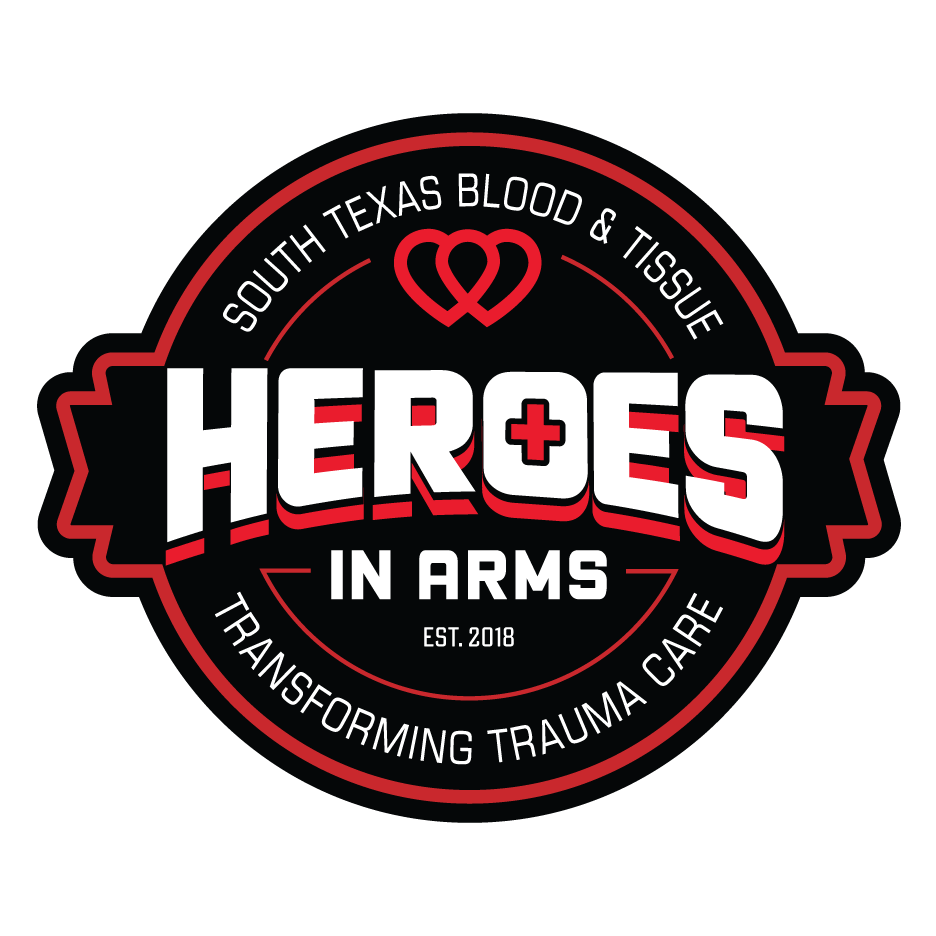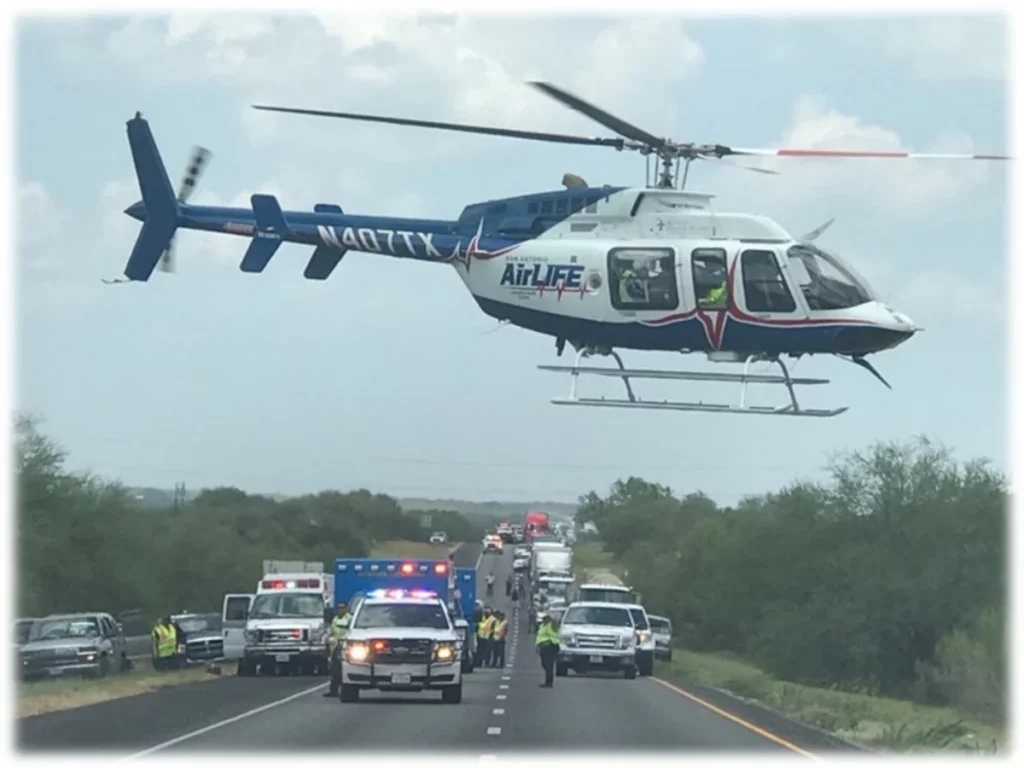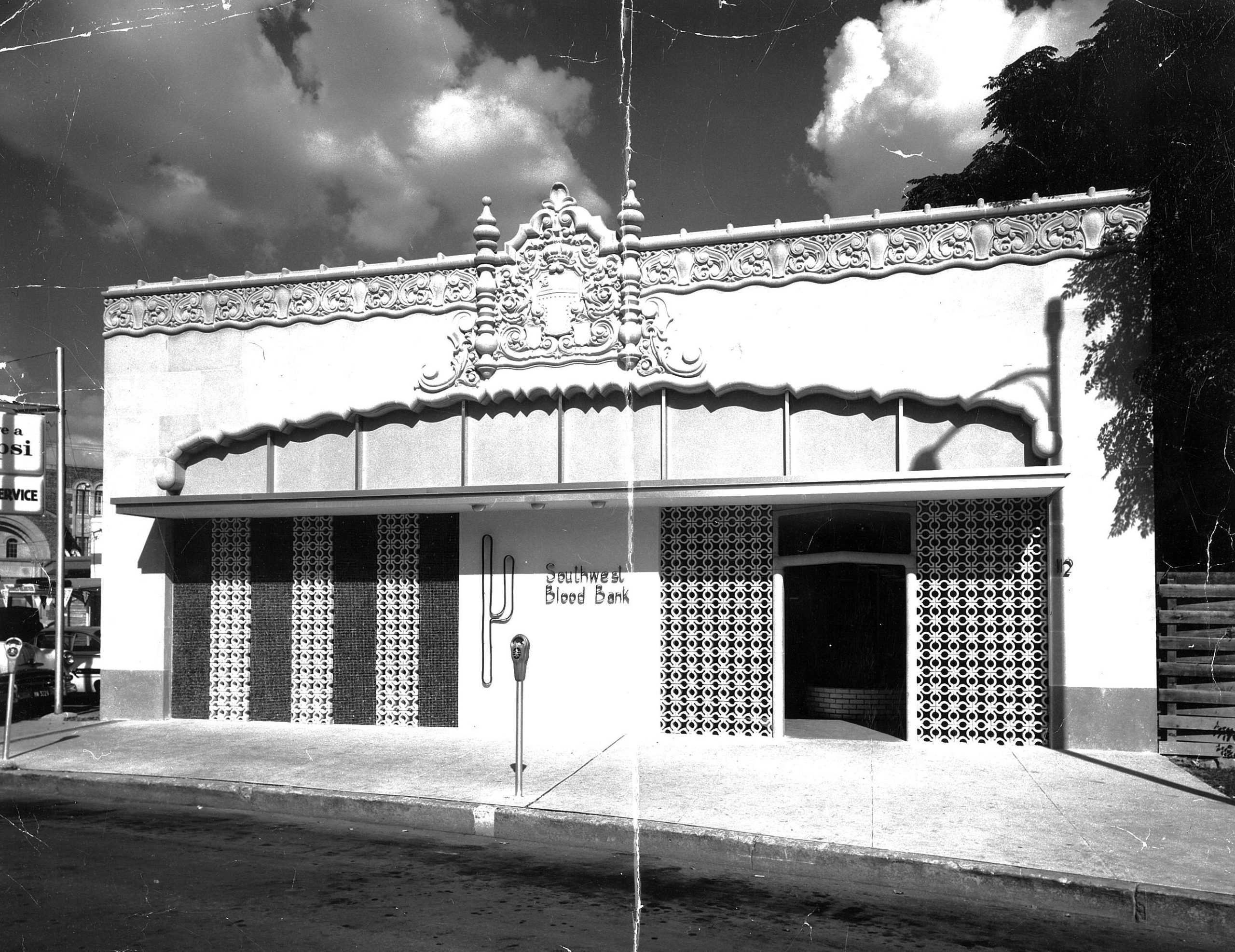Are you O-positive? Your next blood donation may help save someone at the scene of an accident.


In the past, trauma patients usually received a single blood component at a time – red blood cells, plasma, or platelets – or they simply would be transfused with a saline solution. But research showed what they needed was the “whole blood” they had lost. In 2018, South Texas Blood & Tissue joined with area first responders to implement a groundbreaking program to change this standard of care.
Heroes in Arms provides specially screened type O-positive blood to emergency teams to transfuse patients at the scene of an accident, en route to the hospital, or in an emergency room.
The program has led to a 48% decrease in deaths from traumatic injuries, saving hundreds of patients each year.
Heroes in Arms donors have type O-positive blood with low counts of certain antibodies. Those factors make it usable in an emergency for patients with any blood type.
“Whole blood” includes all the major parts of blood – plasma, platelets and red cells. Typically, you receive just one of those parts when you receive a transfusion, depending on the circumstances.
According to a 2022 study in the Annals of Surgery, the use of whole-blood transfusions in major bleeding cases led to a 48% reduction in deaths among trauma patients, compared to patients treated with one or more components of blood (plasma, platelets or red cells).
Research by the U.S. Army showed that having all the parts of blood included in a transfusion reduces the mortality rate in trauma cases from 60% to 20%. Patients receiving whole blood typically required fewer emergency transfusions as well.
Heroes in Arms donors have type O-positive blood with low counts of certain antibodies. Those factors make it usable in an emergency for patients with any blood type.
The program initially was limited to male donors because many men have naturally low levels of the antibodies in question. But because of rising demand, the program now is open to female donors who meet the same testing requirements as male donors and have never been pregnant.
All type O-positive donations with South Texas Blood & Tissue are tested for levels of specific antibodies. Donors whose levels are below a certain threshold are identified as potential Heroes in Arms donors. Donors can give two to three times a year, and they can schedule an appointment for testing by calling 210-731-5590.
No, it is exactly the same as a typical whole-blood donation.
The only other eligibility requirement is that a Heroes in Arms donor cannot be on an aspirin regimen, since aspirin affects the functioning of platelets.
While O-negative is considered the “universal” blood type for emergencies, just 7% of the population has type O-negative blood, so it often is in short supply. The largest proportion of the U.S. population (32%) is O-positive.
The whole-blood program, which was the first of its kind in U.S. civilian healthcare, was launched in San Antonio in 2018 in conjunction with members of the South Texas Regional Advisory Council, which coordinates emergency medical care in 22 South Texas counties, and regional medical helicopter services. It since has expanded to San Antonio Fire Department units, the city’s two level 1 trauma centers, and regional hospitals and EMS units.
The concept for the whole-blood transfusion program was pioneered in South Texas by Dr. Donald Jenkins, who worked on a similar program for the U.S. Army in Afghanistan and a pilot program at the Mayo Clinic before coming to University Health System and UT Health San Antonio.
No, but San Antonio was the first community in the United States to implement a whole-blood transfusion program of this kind for civilian use. The concept dates to the latter stages of World War II, the Korean conflict and the Vietnam war, but was phased out in the 1970s. It was revived in studies conducted by the U.S. Army and the Mayo Clinic.
It is type O-positive whole blood that has low levels of certain antibodies, making it usable in patients of any blood type in emergencies. This stored whole blood is stable up to 35 days and includes all blood components, which has been shown to lead to better outcomes for trauma patients than transfusions of individual blood components.
This initiative has transformed the way trauma care is delivered at trauma scenes, onboard medical helicopters and at emergencies involving San Antonio Fire Department Command Units.
The normal mortality rate when a trauma patient arrives at the hospital requiring massive transfusions (10 units or more in a day) is 75%.
Research done by the military focused on providing whole blood transfusions earlier, since whole blood is better for replacing what the patient loses through massive bleeding.
The military showed that adding whole blood to early transfusion protocols decreased the mortality rate from 60% (when patients received mainly red blood cells) to 20% for patients receiving whole blood, demonstrating a dramatic improvement in survival rates. The patients receiving whole blood also required fewer transfusions to keep them stabilized.
Type O-positive blood donations by men who donate at a South Texas Blood & Tissue donor center will be tested for specific antibody levels. Those below a certain threshold will be identified as potential donors for the program.
Men tend to have lower levels of antibodies in their blood than women, which helps prevent reactions in patients who receive a transfusion. Blood from men in the Brothers in Arms initiative can be received by almost any patient, which is critical in emergency situations when there is no time to test a patient’s blood type.
Brothers in Arms whole blood is being carried on 18 medical helicopters serving South Texas, as well as on San Antonio Fire Department Command Units and Local Level 1 trauma centers.
Using stored whole blood for trauma victims has been shown to be more effective in the treatment of traumatic injuries since it contains all the major blood components: red blood cells, which are lost in bleeding; platelets, which help seal breaks in blood vessels; and plasma, which boosts blood volume.
Stored whole blood is especially significant for trauma treatments because under current guidelines, platelets by themselves are usable for only three to five days. When refrigerated, whole blood can be stored up to 35 days.
This program has also expanded the pool of products available for emergency use, since O-positive is the single largest blood type in the United States. It will help alleviate chronic shortages of O-negative blood, which has been used for emergency transfusions for many years but is found in just 7 percent of the population.
No, but we are one of the first communities in the country to implement it. A similar program was used during the latter stages of World War II, the Korean War and the Vietnam War for battlefield transfusions. The concept was revived by studies conducted by the Mayo Clinic and the U.S. Army.
No. Whole blood donation will be exactly the same as it is now. Brothers in Arms donors may be asked to give two to three times a year.
Just one: Donors cannot be on an aspirin regimen, since that affects the functioning of platelets in the donated blood.

For more than 45 years, the nonprofit South Texas Blood & Tissue Center has focused on a critical purpose: to save and improve lives.
Inspired by a group of physicians, our organization was formed to provide blood to the South Texas region – ensuring a safe and adequate blood supply through proper testing, storage and distribution to hospitals. This essential service allows front-line workers to focus on the direct care of patients, with confidence that this lifesaving resource will be there when it’s needed most.
But we didn’t stop there. Over the years, we’ve evolved as the needs of our patients and hospitals have changed, driven to save lives in as many ways as possible.
We couldn’t do this without donors like you. We understand that the gift of donation is a personal, powerful choice that has the potential to touch a life. Today, we offer many ways to make a difference that include:

Our team has also expanded its programs, partnering with leaders within the healthcare industry to develop a wide range of therapies.